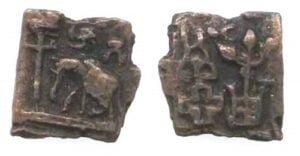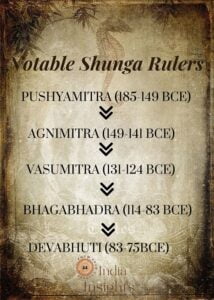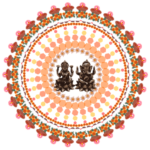50 years after the death of Ashoka, a Brahmin dynasty established in 185 BCE named the Shunga Dynasty. Pushyamitra Shunga, the commander-in-chief of the last Mauryan emperor, assassinated Brihadratha. This post-Mauryan dynasty controlled north-central and eastern India and parts of the northwest from around 185 to 73 BCE.
Origin:

The seventh ruling dynasty of Magadha was the Shunga Dynasty. Pushyamitra Shunga established the dynasty in 185 BCE after defeating the last Mauryan Emperor Brihadratha. About 50 years after Ashoka’s death, Pushyamitra, the commander-in-chief of Brihadratha assassinated him and started the Shunga dynasty. He is said to have been motivated by a desire to restore Brahmin supremacy in India.
After establishing the Shunga Dynasty, Pushyamitra controlled the central parts of the old Mauryan Empire. Besides It is known from Dhanadeva-Ayodhya Inscription, they controlled the central city of Ayodhya in the northern central part of India. At its peak time, this dynasty ruled over a large area from the Punjab region in the northwest to the Narmada River in the south.
Shunga Rulers:
The Shunga Dynasty had ten rulers in total. The most notable rulers were:

Pushyamitra (185-149 BCE):
According to Puranas, Pushyamitra became the king after killing his master and the last Mauryan emperor Brihadratha. He is recorded to have performed the Ashvamedha ritual to legitimate his right to rule. Inscriptions of the Shunga have been found as far as the Ayodhya (The Dhanadeva-Ayodhya inscription). Divyavadana mentions that his empire stretched as far as Sakala (now Sialkot) in the northwestern Punjab region.
Based on Buddhist tradition, some scholars believe that Pushyamitra was indeed a persecutor of the Buddhist faith. However, others believe that Buddhist scholars were biased against Pushyamitra because he did not patronize them.
Agnimitra (149-141 BCE):
Agnimitra was the second king of the Shunga Dynasty. He succeeded his father Pushyamitra Shunga. According to Kalidasa in the Malavikagnimitram (Act IV, Verse 14), Agnimitra belonged to the Brahmin Baimbika family. In addition, this book states that he fought the battle of Vidarbha with his neighboring Vidarbha Kingdom between 175 and 150 BCE.
Vasumitra (131-124 BCE):
According to the Manuscript of the Matsya Purana Vasumitra was the fourth ruler of the Shunga Empiror. He was the son of Agnimitra by his queen Dharini and brother or half-brother of Vasujyeshtha, the stepson of Queen Malavika. Malavika was the third wife of King Agnimitra. After becoming the king, Vasumitra gave himself up to pleasure. In his reign, Shunga’s decline began. Sensing an opportunity, enemies began plotting.
Bhagabhadra (114-83 BCE):
Bhagabhadra was one of the kings of the Shunga Dynasty. He ruled in north, central India around 114 BCE to 83 BCE. Bhagabhadra was known to have held court at Vidisha although the capital of the Shungas was at Pataliputra. He is best known from an inscription at the site of Vidisha in Central India, the Heliodorus Pillar. This inscription validates that the Shungas ruled in the area of Vidisha around 100 BCE. Altogether three shunga pillars have been found there. The inscription written on the Garuda pillar is regarded as the earliest material evidence of Bhagavatism in India.
Devabhuti (83-75BCE):
Devabhuti was the last king of the Shunga Dynasty. Vasudeva Kanva, the founder of the Kanva Dynasty, assassinated him. According to Harshacharita, Vasudeva Kanva killed him with the help of the daughter of a servant woman of Devabhuti. The servant disguised herself as his queen.
Shunga Dynasty Military and Foreign Policy:
The Shungas were a powerful military force. They fought many wars against foreign powers like Kalingas and Satavahanas. They also fought against Indo-Greeks and as well as the Panchalas and Mathuras.
The play Malavikagnimitram by Kalidasa describes a battle between a squadron of Greek cavalrymen and Vasumitra. In This battle, they defeated a squadron of Greeks and successfully completed Ashvamedha Yagna.
Also, the Shungas had a vigorous foreign policy. They maintained diplomatic relations with other kingdoms in India and abroad. Further more, they sent embassies to other countries such as China and Rome.
People Also Read:The Remarkable Satavahana Dynasty: A Glimpse into the Past
Epigraphic and Archaeological Evidence of the Shunga Dynasty:
Dhanadeva-Ayodhya Inscription:

The Dhanadeva inscription refers to a local king Dhanadeva. He claimed to be the sixth descendant of Pushyamitra. This inscription holds the record that Pushyamitra performed two Ashvamedhas in Ayodhya.
Yavanarajya Inscription:
The Yavanarajya inscription or Maghera inscription suggests that the Indo-Greeks controlled Mathura during the 1st century BCE. It seems that the city of Mathura was retaken by the Shungas themselves or probably by other indigenous rulers such as the Datta Dynasty or the Mitra Dynasty.
Heliodorus Pillar Inscription:

The Heliodorus pillar indicates that around 110 BCE Sungas and Indo-Greeks seem to have reconciled. And they exchanged diplomatic missions.
Decline of Shunga Dynasty:
The Shunga empire began to decline in the late 2nd Century BCE. After the death of Agnimitra, the empire rapidly disintegrated. Coins and Inscription indicate that much of northern and central India consisted of small kingdoms. They separated themselves from the Shunga dynasty. Due to internal power struggles and foreign invasions this dynasty finally overthrown by the Kanva dynasty in 73 BCE.
Moreover the Shunga Dynasty was a significant period in Indian history. The Shungas were able to maintain a large and powerful empire for nearly a century. They were of Brahmin religion and performed Ashvamedha. Although, Pushyamitra might have destroyed the original Sanchi Stupa, later his son Agnimitra rebuilt the Stupa in the 2nd Century (based on Ashokavadana).
The Shungas were a major trading power. They traded with other trading powers. The Shungas issued their own coins. Lastly they played an important role in the development of Hindu Culture and religion.


Pingback: Bhitari Pillar Inscription : The life of Skandagupta - India Insights
Great delivery. Sound arguments. Keep up the good spirit. https://www.Waste-ndc.pro/community/profile/tressa79906983/